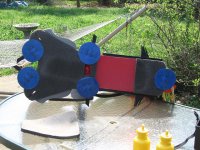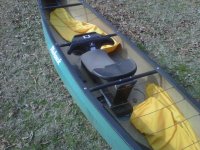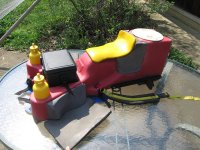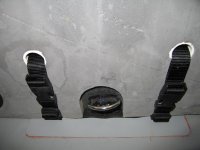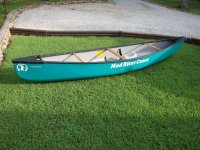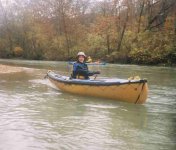"I know the rivers he is running. There are long stretches of flats mixed with some CL II, and any solo downriver canoe with some depth and rocker would handle it fine."
Focusing on this quote, the answer is easy: ANY canoe can run such waters, and historically have: birch bark, clinker wood, wood/canvas, aluminum, fiberglass, mixed composites, Royalex and other plastics.
Originally, virtually all these canoes were tandems even if paddled solo. Then came shorter and narrower and hence tippier solos. None of us can speak to how comfortable someone else will feel in the various models of tippier solo canoes.
How well and elegantly the canoe runs the class 2 rapids is a function of the paddler's skill. Any canoe can "get through" them. If the paddler has the skill and interest to do eddy turns, ferries and other upstream work, and otherwise "play" the class 2 rapids, he may prefer one of the turnier models already named. None of us can speak to his skills and interests.
No canoe, even specialized whitewater designs, has to have a saddle. Saddles and pedestals are safety features. (I won't belabor this thread with an account of how I almost drowned by being pinned with my legs under a kneeling thwart on one rock in a class 0 rapid.)
I thought Royalex was one of the parameters, but if not, I almost always advise the lightest canoe reasonably possible for the water conditions and bank account at hand. Anyone with solid intermediate whitewater skills can paddle lightweight composite canoes in the kind of waters described.
Probably the list is as complete as it can be, other than that any tandem canoe paddled solo can handle such waters. Some of those are certainly lighter weight than the Royalex whitewater models and many are probably a lot more available on the used market.
I'm positive I said nothing informative to Mike in this post, but us folks who don't canoe any more have time on our hands.
Oh, I think one could be found for not much more.
Focusing on this quote, the answer is easy: ANY canoe can run such waters, and historically have: birch bark, clinker wood, wood/canvas, aluminum, fiberglass, mixed composites, Royalex and other plastics.
Originally, virtually all these canoes were tandems even if paddled solo. Then came shorter and narrower and hence tippier solos. None of us can speak to how comfortable someone else will feel in the various models of tippier solo canoes.
How well and elegantly the canoe runs the class 2 rapids is a function of the paddler's skill. Any canoe can "get through" them. If the paddler has the skill and interest to do eddy turns, ferries and other upstream work, and otherwise "play" the class 2 rapids, he may prefer one of the turnier models already named. None of us can speak to his skills and interests.
No canoe, even specialized whitewater designs, has to have a saddle. Saddles and pedestals are safety features. (I won't belabor this thread with an account of how I almost drowned by being pinned with my legs under a kneeling thwart on one rock in a class 0 rapid.)
I thought Royalex was one of the parameters, but if not, I almost always advise the lightest canoe reasonably possible for the water conditions and bank account at hand. Anyone with solid intermediate whitewater skills can paddle lightweight composite canoes in the kind of waters described.
Probably the list is as complete as it can be, other than that any tandem canoe paddled solo can handle such waters. Some of those are certainly lighter weight than the Royalex whitewater models and many are probably a lot more available on the used market.
I'm positive I said nothing informative to Mike in this post, but us folks who don't canoe any more have time on our hands.
There is also the Hemlock SRT in composite which would be very good indeed, but you ain't gonna find one for $800.
Oh, I think one could be found for not much more.

